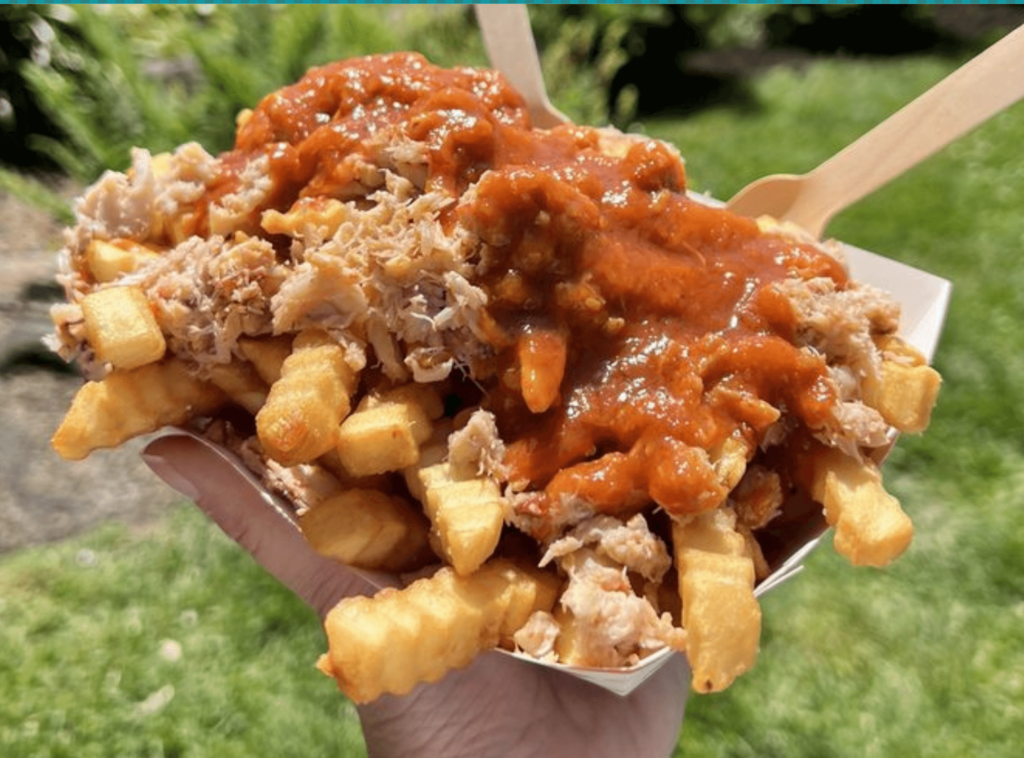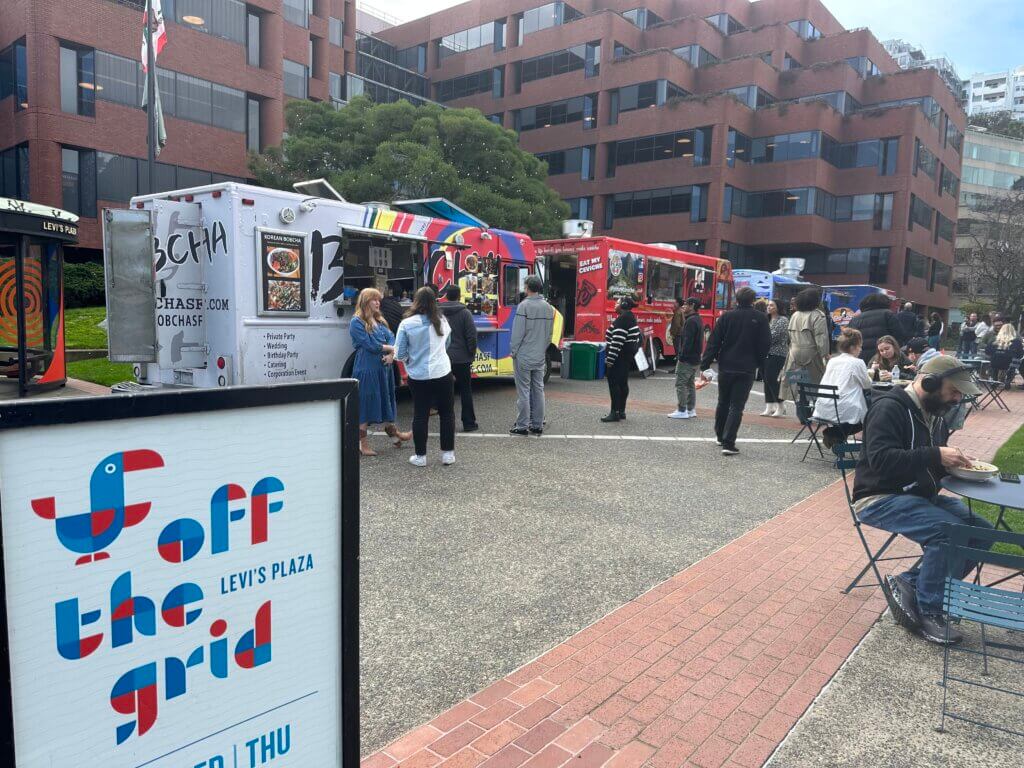
Faced with rising costs, limited real estate, fast-growing technology and the impacts of deindustrialization, the food sector — like almost every other industry — is changing rapidly. The only constant through it all has been a growing consumer demand for quality, variety and convenience when it comes to what they eat.
Few industries are better positioned to rise up and meet this demand than mobile food.
Mobile food (namely, trucks, carts and stalls) is where culinary creativity, modular technology and temporary space converge. Less transactional than delivery and more dynamic than a restaurant, mobile food is fueled by diverse, enterprising small business owners who entice diners with exciting options that meet them in the middle.
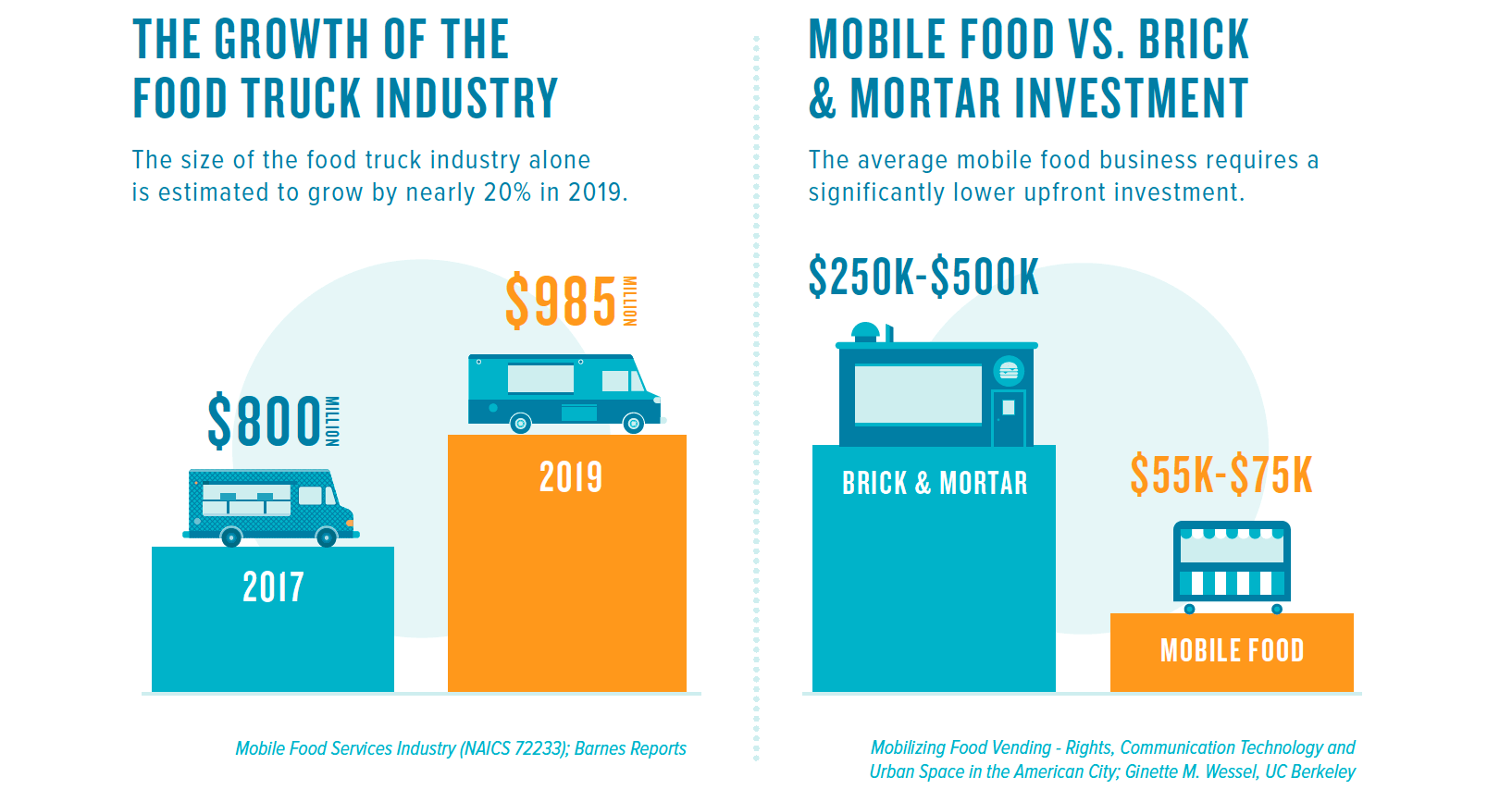
With nearly a decade of experience activating space under our belts, we’ve learned a few key things.
On a given day at one of our public markets, we’ve witnessed first-hand the power of welcoming spaces to be a catalyst for good, fostering empathy, improving civic life and bringing diverse groups of people together over an experience that’s larger than themselves. We’ve heard from our mobile food creators, partners and clients that our work helps uplift small businesses, drive economic activity and strengthen communities. But we’ve never really been able define the movement, or track its course — until now.
GET THE REPORT
Our first annual trends and insights report reveals the ways in which mobile food is transforming space, building community and connection, and making food exciting again — now and in the future. Through proprietary insights, interviews with industry experts, entrepreneurs and Off the Grid’s own leadership, Think Mobile, Act Local offers a view into the opportunities mobile food provides to brands, cities, entrepreneurs and consumers alike.
- “Mobile food meets you halfway. You don’t have to go to the restaurant, and the restaurant doesn’t have to come to you.” — Greg Spangler, Owner, Bollocks Truck
Insight #1: Less Risk, More Risk Taking
Quick to adapt and unbound by four walls, the enterprising individuals at the helm of the mobile food movement deliver variety and convenience in equal portions.
While chefs at brick and mortar restaurants may sit uneasy with making risky menu choices, mobile food has proven a hotbed for culinary innovation — from reinvented cup o’ noodles to artisanal s’mores and adobo burritos.
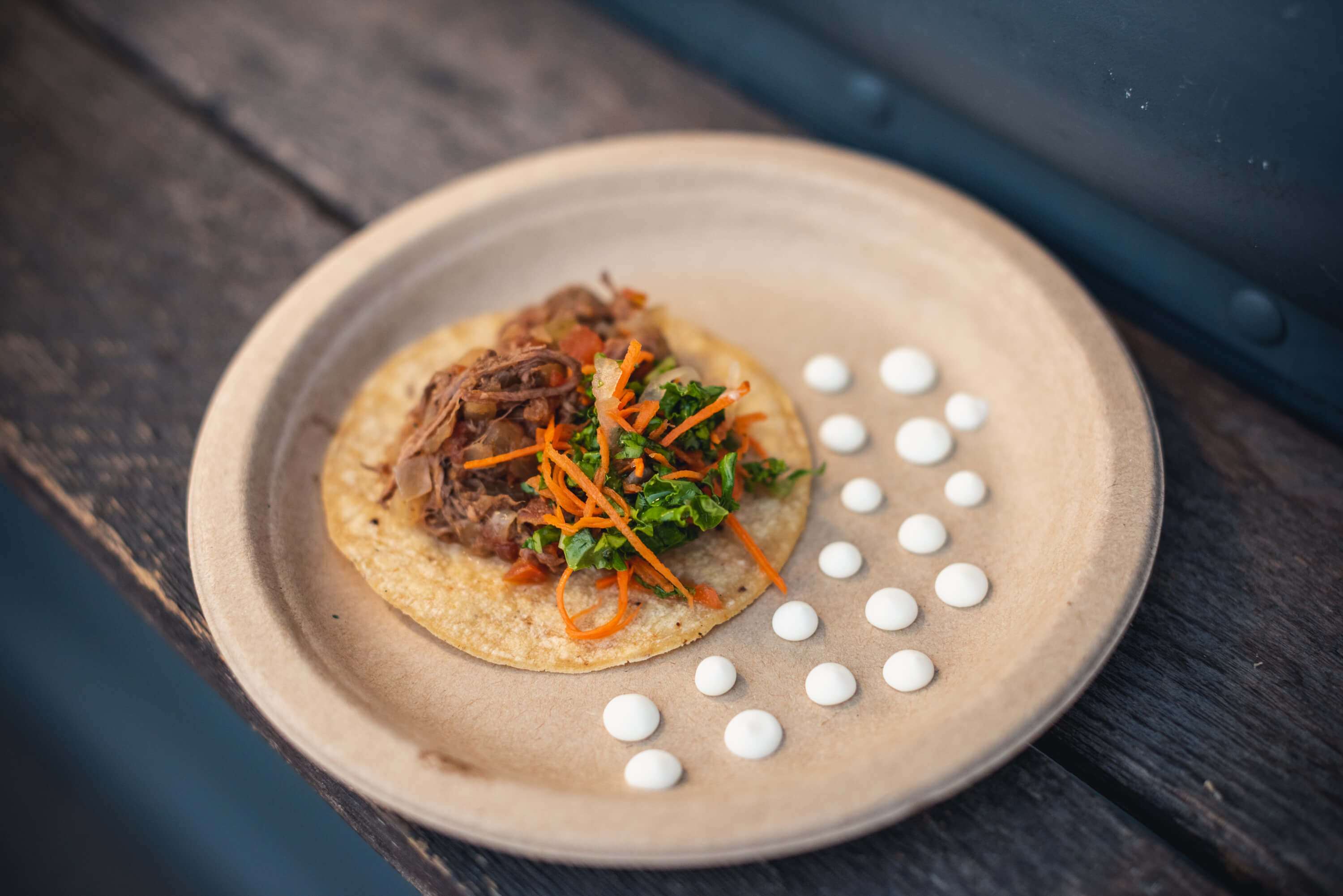
Thanks to the relative ease of market entry afforded by mobile food, coupled with the ability to serve just about anywhere, these businesses are more agile and less precarious than their fixed counterparts.
Significantly for new or expanding ventures, mobile food offers a low-cost means to test out a particular neighborhood before moving there permanently.
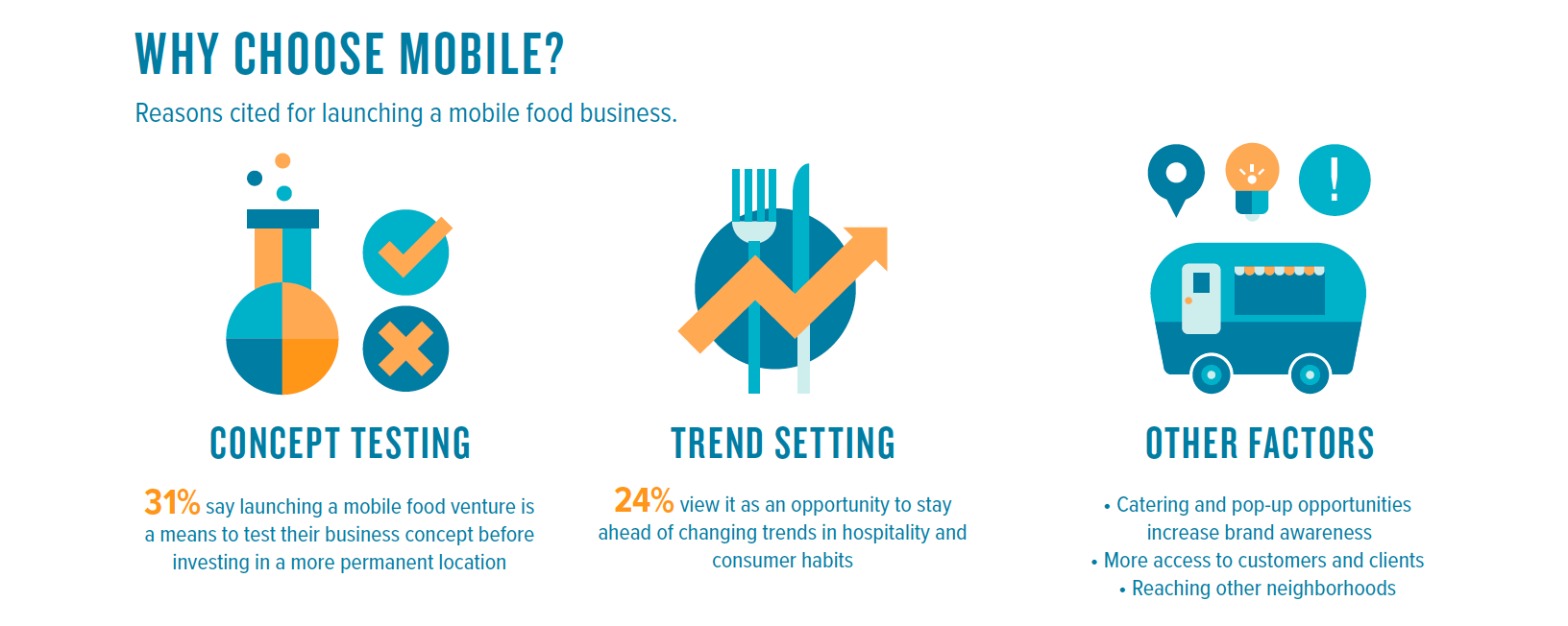
Off the Grid Insights™
The Rise of the Dabbler
Buoyed by emerging technology and the new gig economy in which having a “side hustle” is the new norm, a different breed of mobile food entrepreneur has emerged — the dabbler. Dabblers are passionate home cooks and would-be small business owners who view their mobile food venture as a controlled experiment on the open market, an added source of income, or even a creative outlet from their nine-to-five.
In March 2018, a Nashville-style hot chicken dabbler debuted at an Off the Grid market and went on to serve 9,294 meals over 31 events, becoming the highest seller for the 2018 season.

Off the Grid Insights™
Insight #2: Making Places Out of Spaces
Mobile food represents a “lighter, quicker, cheaper” approach to urban design, planning and architecture that capitalizes on the existing assets — and creative energy — of a community, generating novel uses and economic opportunity for spaces in transition.
In 2017 when the Union Square Business Improvement District sought a way to enliven a stretch of downtown San Francisco’s Stockton Street during the holidays — a construction zone since 2011 during completion of the city’s Central Subway Project — Off the Grid was commissioned to design a five-week pop-up holiday pedestrian plaza dubbed “Winter Walk”. The event, which returned this year, saw 1.7 million guests enjoy mobile food, beer gardens and seating nooks that offered a temporary oasis in the city.
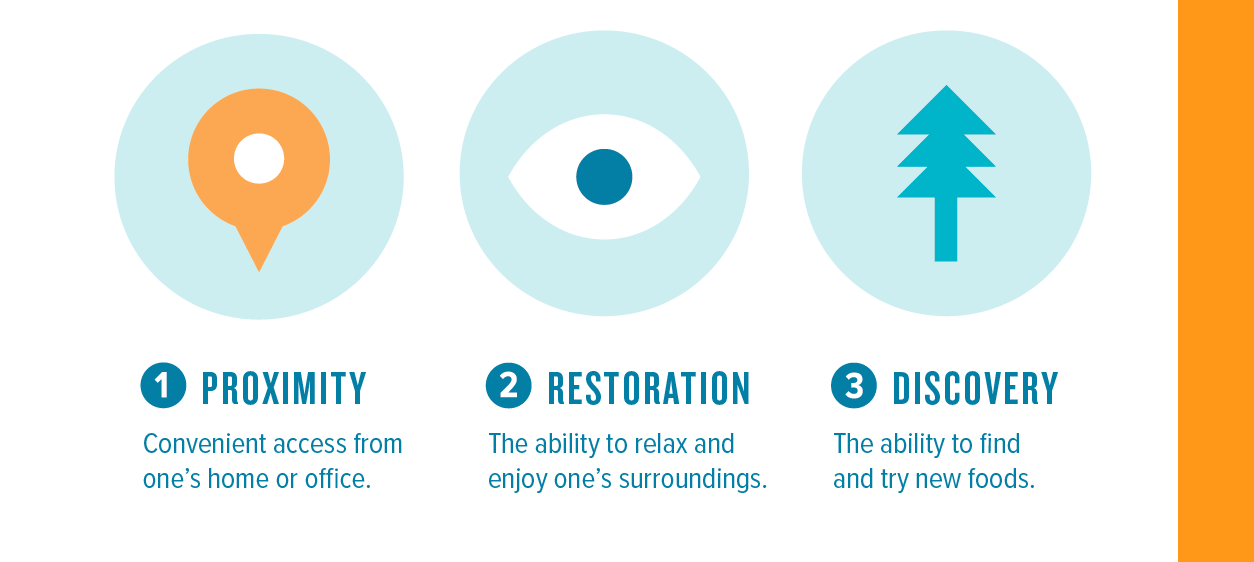
Off the Grid Insights™
The Rise of Food Hall Style Dining
Food hall style dining — in which artisanal food vendors and retailers sell products side-by-side — has exploded in urban centers as a lower investment means to activate underutilized space while creating holistic hospitality experiences for guests.
Whether curbside, inside or outside, new innovations in mobile architecture (including the subfield of avant-garde constructions fashioned from shipping containers, or ‘cargotecture’), are likely to propel the food hall dining trend in the future while changing the way we conceive of — and experience — space.
- “The venue operator of a food hall is, in effect, the mayor of ‘tiny town.’ The vendors are the city services and the customer is the citizenry. The mayor needs to keep both constituencies happy if he or she wants to stay in office.” — Philip Colicchio, Attorney and Food Hall Consultant
Insight #3: Building Community Through Shared Experience
Whether public or private, mobile food experiences go beyond just the culinary offerings itself, providing a spontaneous gathering place where friends, neighbors and strangers can connect.
Creative uses of mobile food can provoke thought, conversation and build community by inserting pockets of the unexpected into the urban fabric.
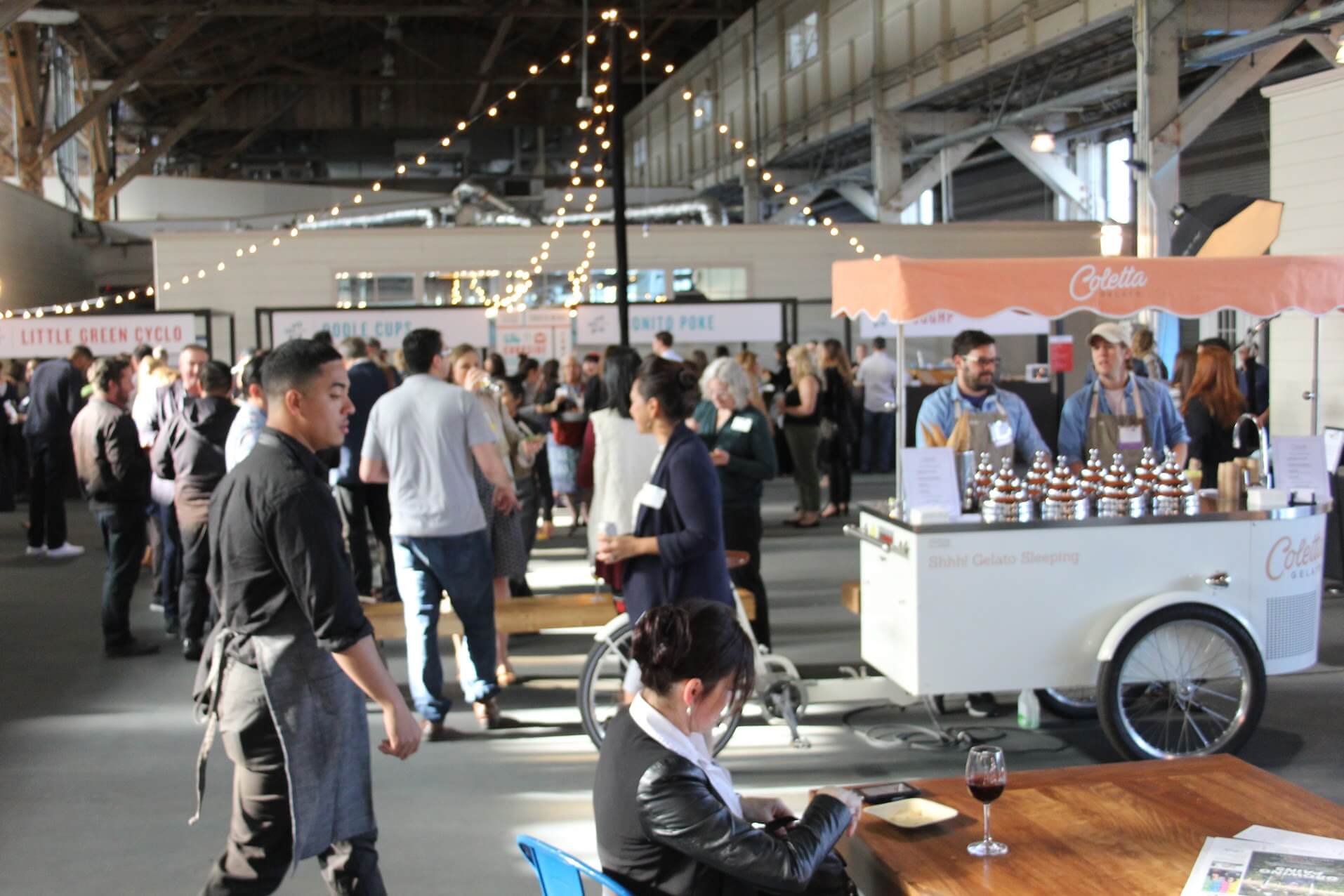
The Makeup of the Mobile Food Movement
Mobile food has also proven to be a powerful vehicle for catalyzing diverse entrepreneurship (and diverse aspirations). Providing a snapshot of the mobile food community nationwide, a survey of San Francisco’s robust mobile food scene shows 30% of mobile food businesses are immigrant-owned, 30% are women-owned, 8% are LGBTQ owned, and 2% are military/veteran-owned.
Such an environment is one that, we believe, can lead to greater understanding across cultural and socio-economic divisions, and offer a means for people to feel connected to a place and a purpose — and, ultimately, to one another.
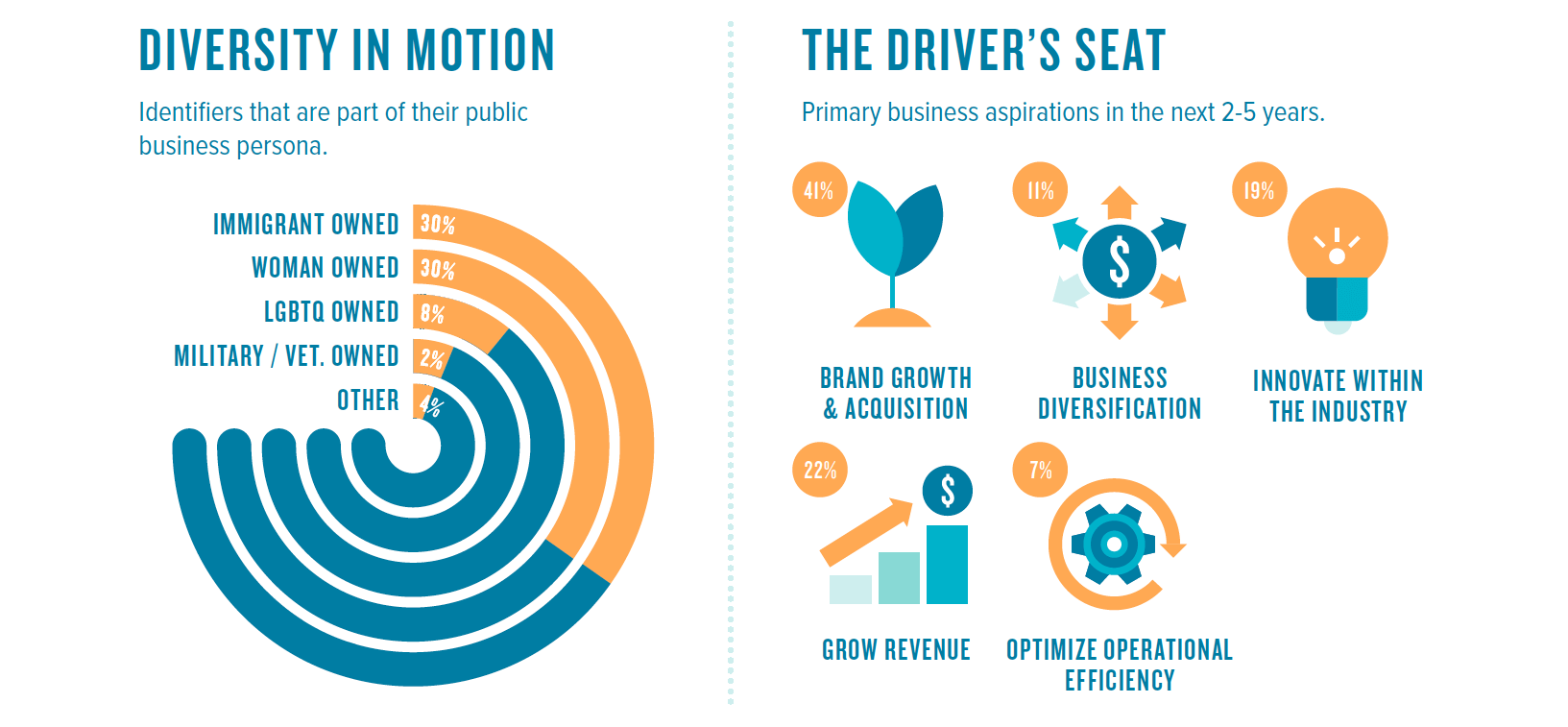
Off the Grid Insights™
And as rapidly changing cities continue to demand flexibility, the emerging field of mobile architecture (which includes our own Cubert, a modular pop-up kitchen and retail venue) is providing planners with new ways to activate public and private space while creating pathways to entrepreneurship for minority and underserved populations.
The Future of Mobile Food: Industry Leaders Weigh In
Side Hustlers Keep Hustlin’
Off the Grid founder & CEO Matt Cohen predicts that 2019 will see even more mobile food entrepreneurs forgo the cost of entrepreneurship and keep their day jobs while building their side hustle.
In California, recently passed legislation brought forth by the C.O.O.K. Alliance will soon allow hobbyist chefs to sell food cooked out of home kitchens directly to the public. Flexible mobile vending opportunities, like those afforded by Off the Grid, are likely to play host to a new generation of enterprising, passionate and culturally diverse cooks.
Scale Frictionlessly Without Pain
Co-founder of the wildly popular and now bi-coastal Mission Chinese Food — which started as a food truck by the name of Mission Street Food — Anthony Myint predicts that in 2019 “the flexible dining models that launched our own restaurant careers will continue to make food more accessible by lowering costs and other barriers to entry for aspiring chefs.”
- Similarly, Cohen forecasts that “new entrepreneurial pathways and flexible vending opportunities will give cooks direct access to the market and allow them to scale without pain.”

Legislation that Levels the Playing Field
The past ten years have seen a boom for the mobile food industry but it needs another ten to level the playing field with legislation that addresses the realities of starting a mobile food business.
Sam Mogannam, owner of San Francisco’s beloved Bi-Rite Family of Businesses, predicts that “mobile food will play a critical role in our success in 2019. In the past year, we were able to influence the creation of new legislation that allows brick and mortar food service establishments — that normally wouldn’t be allowed to have a mobile food facility in front of their businesses — the opportunity to do so when their building undergoes a mandatory seismic retrofit. This allows businesses like ours to keep staff employed and retain a connection to the community.”


